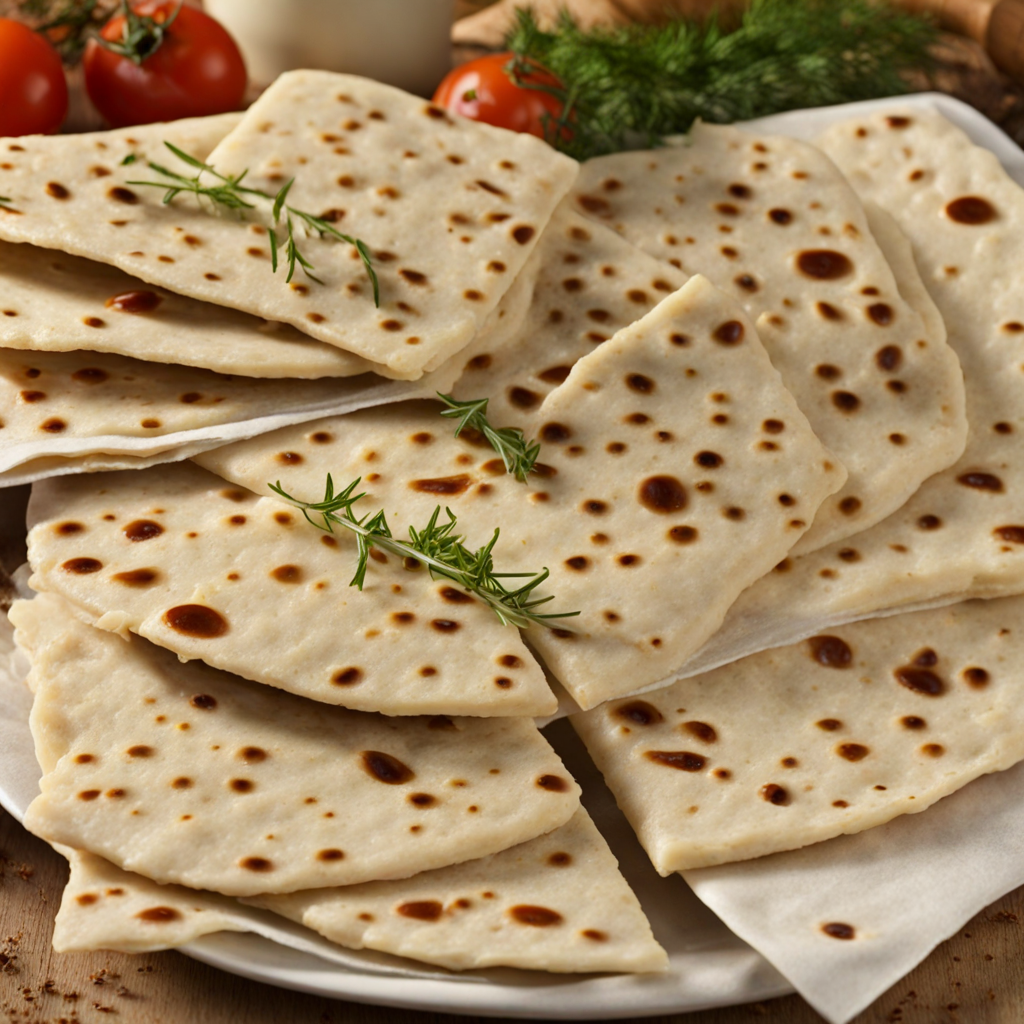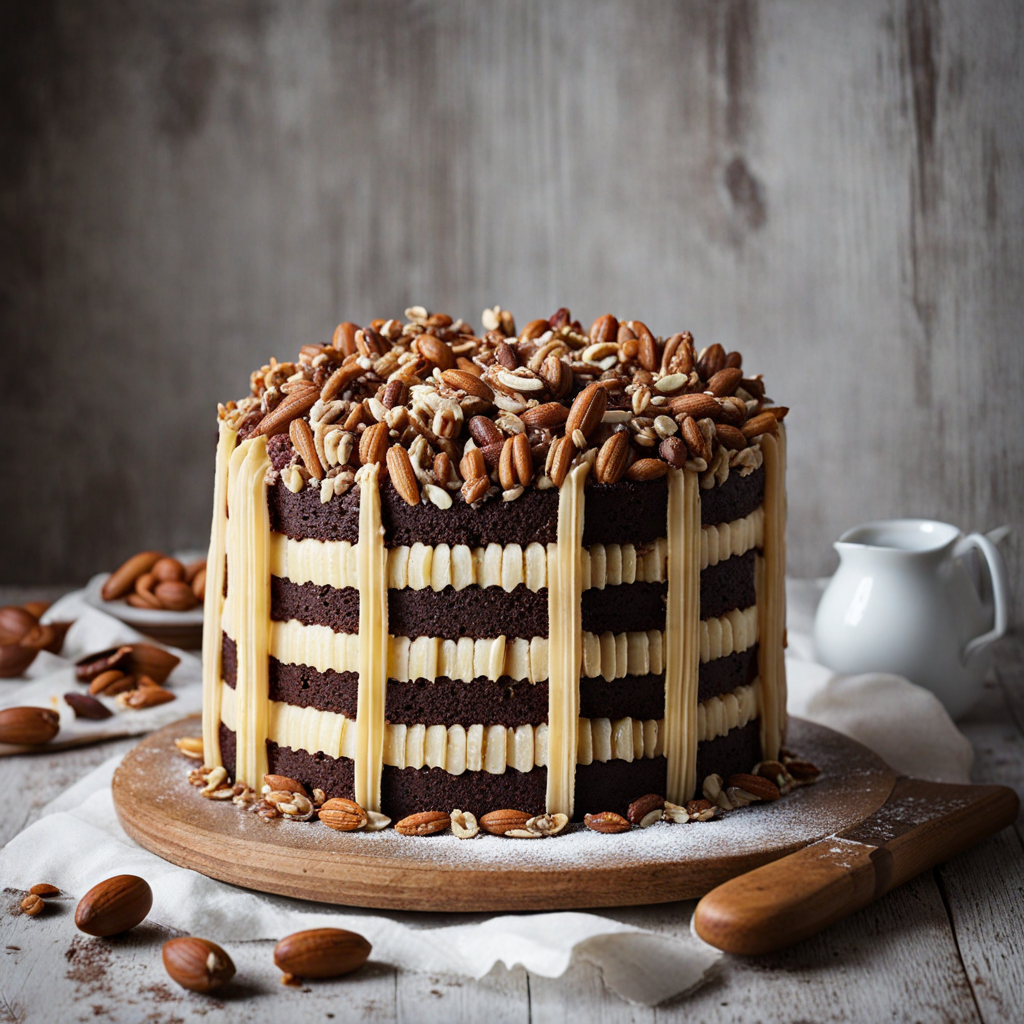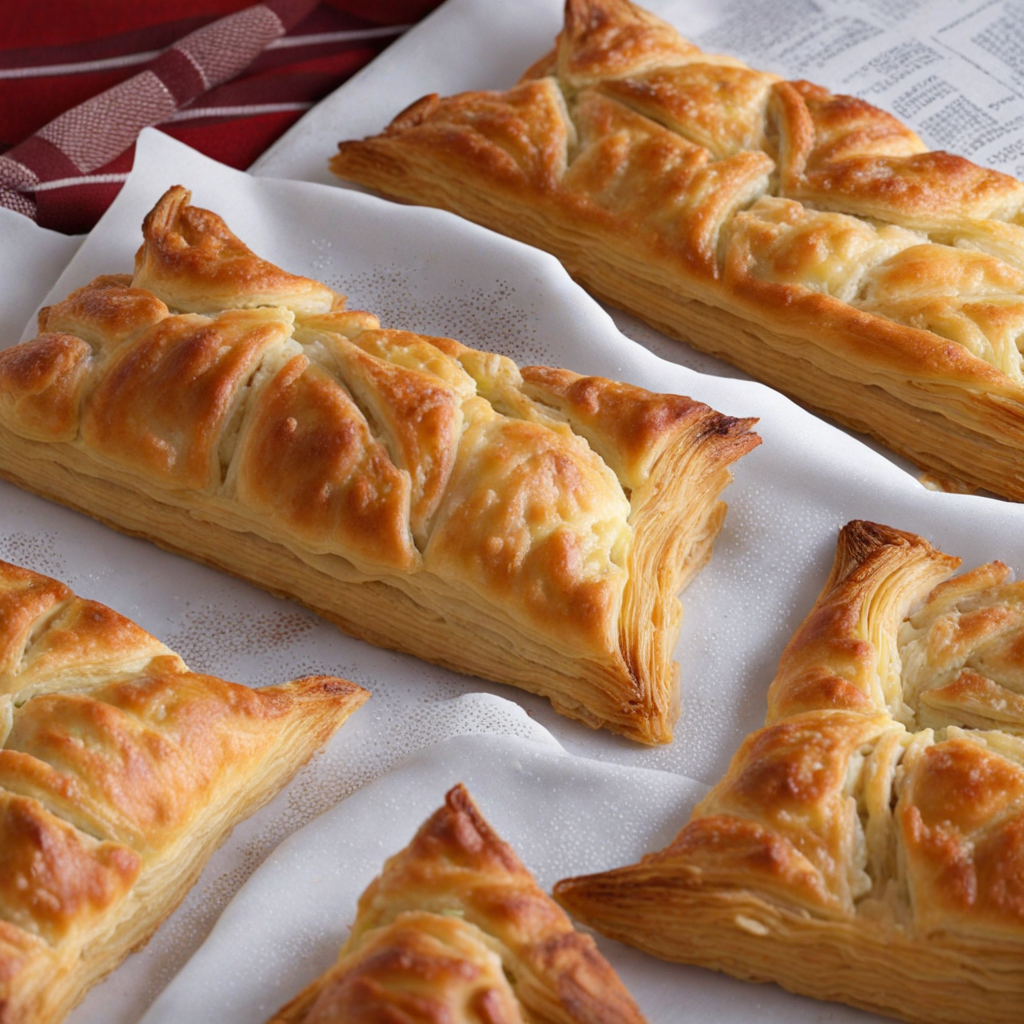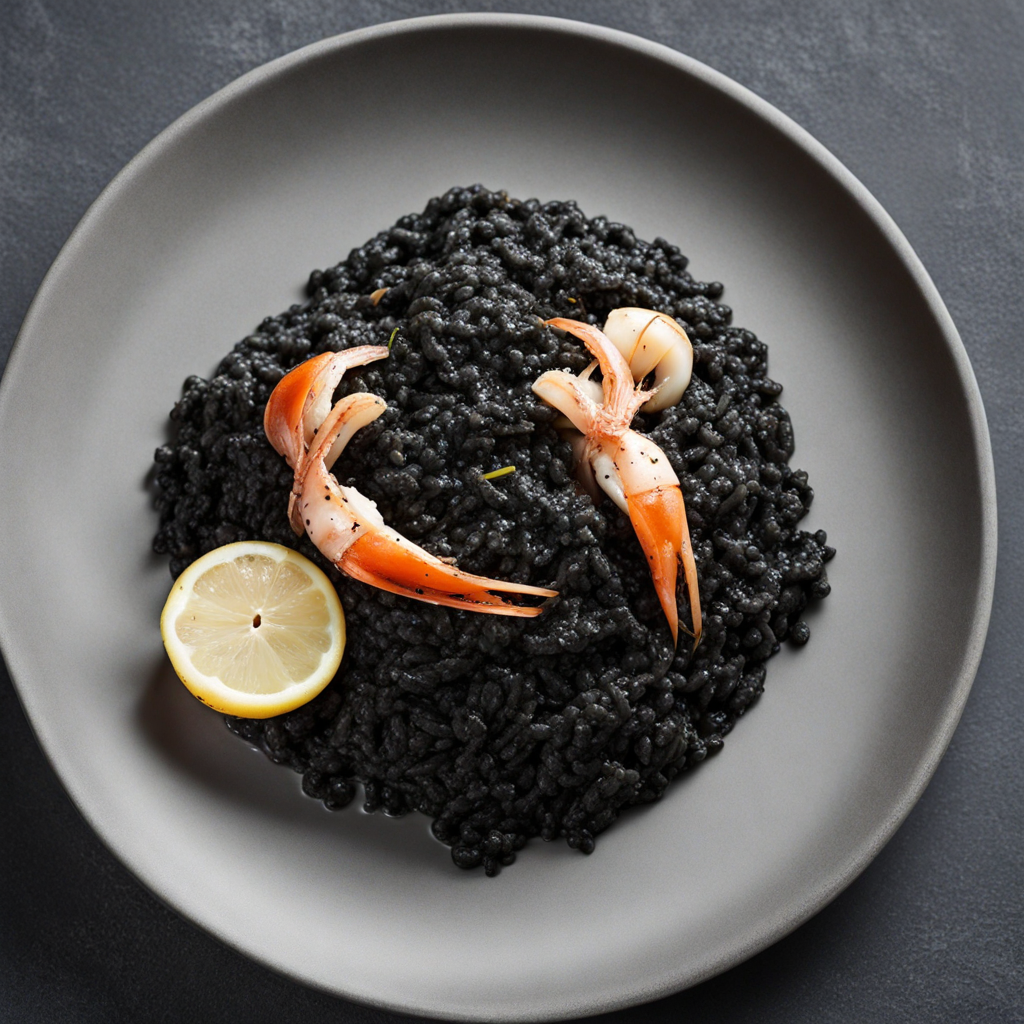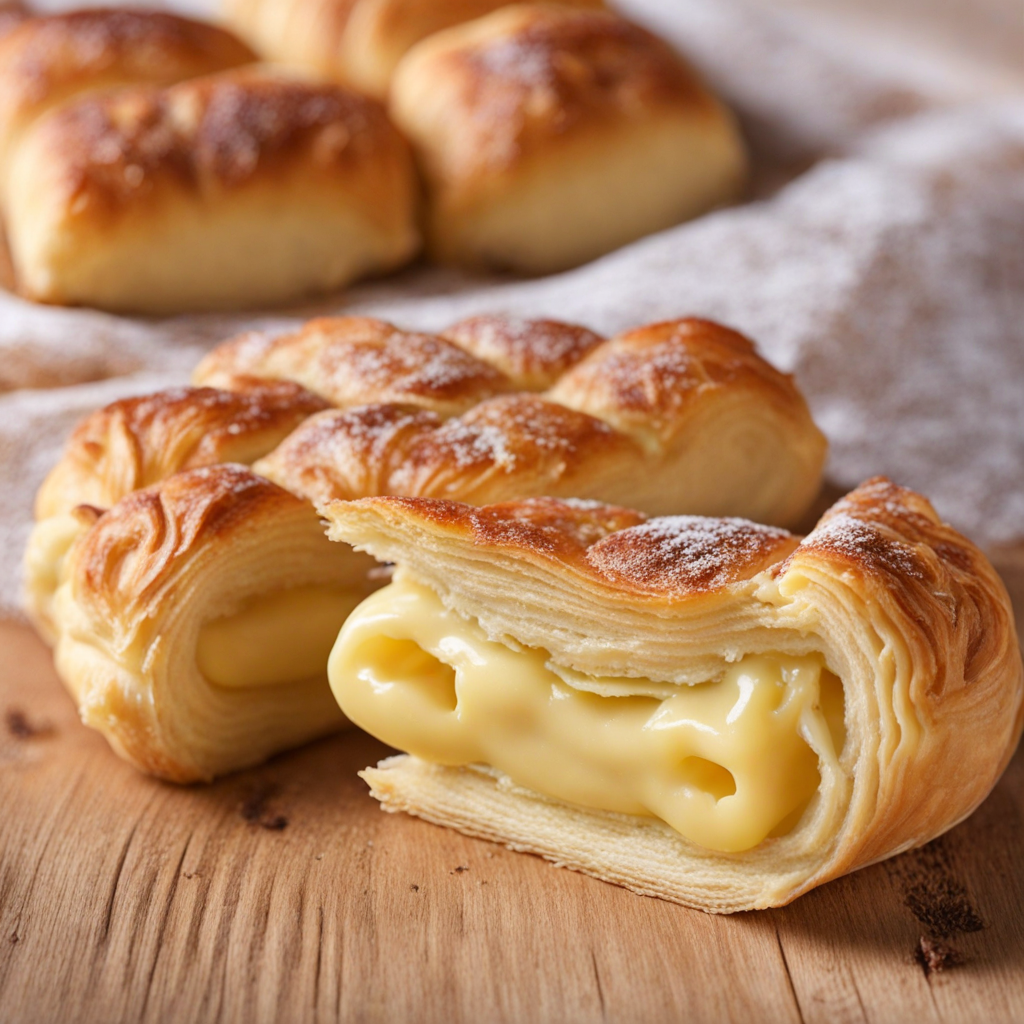Mlinci
Mlinci is a traditional Croatian dish that offers a unique taste experience, perfectly embodying the rustic charm of the region. This dish consists of thin, flat, and slightly crispy dough, which is typically made from flour, water, and salt. The dough is rolled out and then partially cooked in boiling water, before being dried and baked, resulting in a texture that is both chewy and crisp. Mlinci is often served as a side dish, particularly alongside rich, meaty main courses, allowing it to absorb the flavors of the accompanying sauces and gravies beautifully. The flavor profile of Mlinci is subtle yet distinctive. Its base is mild, which makes it an excellent canvas for various seasonings and toppings. When served, Mlinci is usually drizzled with a mixture of meat juices or broth, which enhances its taste and adds a savory depth. The crispy edges provide a delightful contrast to the softer, moister center, making each bite a combination of textures that delight the palate. This versatility allows Mlinci to complement a wide range of dishes, from roasted meats to stews, making it a staple in Croatian cuisine. In addition to its taste, Mlinci carries a cultural significance, often being served during special occasions and family gatherings. The preparation process is a labor of love, reflecting the traditional methods passed down through generations. As you explore this dish, you'll not only discover a new flavor but also experience a piece of Croatian heritage. Whether enjoyed at a local eatery or made at home, Mlinci promises to elevate your culinary adventure and introduce you to the heart of Croatian food culture.
How It Became This Dish
The History of Mlinci: A Culinary Gem of Croatia Origins of Mlinci Mlinci, a traditional Croatian dish, finds its roots in the picturesque landscapes of the country, particularly in the regions of Dalmatia and the interior areas. The name "mlinac" derives from the Croatian word "mlin," which means mill, alluding to its connection with flour milling—a crucial aspect of agrarian life in Croatia. The dish consists of flat, thin sheets of dried pasta, usually made from wheat flour and water, which are then baked to achieve a distinctive flavor and texture. Historically, Mlinci was a practical food that emerged from the necessity of preserving and utilizing flour-based products. In rural communities, where resources were often limited, families would prepare Mlinci during the harvest season, utilizing freshly milled flour. The process of making Mlinci is labor-intensive, requiring the dough to be rolled out, cut into sheets, and then dried under the sun or in a warm oven. This preservation method allowed families to store the dish for several months, providing sustenance during the harsher winter months. Cultural Significance Mlinci is more than just a dish; it is a testament to the Croatian way of life, embodying the values of resourcefulness and sustainability. It has significant cultural importance, especially in Dalmatia, where it is often served as a side dish accompanying roasted meats, particularly duck and lamb. The dish is traditionally prepared during festive occasions such as weddings, family gatherings, and religious celebrations, symbolizing the importance of community and family ties in Croatian culture. As a staple of Croatian cuisine, Mlinci is often featured in the culinary lexicon of the wider Mediterranean region. The dish reflects the influences of Mediterranean gastronomy—simple, wholesome ingredients combined with traditional cooking techniques. The appeal of Mlinci goes beyond mere sustenance; it evokes nostalgia and a sense of belonging, connecting generations through shared culinary practices. Development Over Time The evolution of Mlinci mirrors the broader changes in Croatian society and its culinary landscape. Originally a rustic dish prepared by rural families, Mlinci began to gain popularity in urban areas during the 19th century, coinciding with the rise of national consciousness and the promotion of traditional Croatian cuisine. This period saw an increased interest in regional dishes, and Mlinci became a symbol of Croatian identity. In the 20th century, as Croatia experienced significant political and social changes, Mlinci's role in culinary culture continued to evolve. The dish became emblematic of Croatian heritage, often served in restaurants that aimed to showcase traditional fare. With the advent of tourism in Croatia, particularly in the coastal regions, Mlinci attracted the attention of visitors eager to experience authentic Croatian cuisine. This led to a renaissance of traditional cooking methods, and Mlinci began to be featured on menus across the country, from local taverns (konoba) to upscale restaurants. The modern preparation of Mlinci may vary slightly from region to region, reflecting local ingredients and culinary practices. While some chefs adhere to the traditional recipe, others experiment with flavors, incorporating herbs, spices, or even incorporating modern cooking techniques such as sous-vide. This adaptability has ensured that Mlinci remains relevant in contemporary cuisine while honoring its historical roots. Mlinci in Contemporary Cuisine Today, Mlinci is celebrated not only in Croatia but also among Croatian diaspora communities worldwide. Recipes have been passed down through generations, often with families adding their own unique twists. Some families may incorporate various sauces or pair Mlinci with seasonal vegetables, enhancing its versatility. The revival of interest in traditional foods has also sparked a movement towards sustainability and local sourcing. Many chefs emphasize the importance of using organic, locally sourced ingredients, reflecting a broader trend in the culinary world that values authenticity and sustainability. This has led to an increase in artisanal production of Mlinci, with small-scale producers crafting handmade versions that honor traditional methods. In recent years, Mlinci has also found a place in international culinary competitions and food festivals, where chefs showcase this Croatian delicacy to a global audience. As Croatia continues to be a popular tourist destination, Mlinci serves as a culinary ambassador, providing visitors a taste of the country’s rich gastronomic heritage. Conclusion Mlinci is more than just a dish; it is a reflection of Croatian culture, history, and the enduring connection to the land and its resources. From its humble origins in rural kitchens to its place on modern restaurant menus, Mlinci has transformed while staying true to its roots. Its cultural significance and adaptability ensure that it will remain a beloved staple of Croatian cuisine for generations to come. Whether enjoyed at a family gathering or in a bustling restaurant, Mlinci continues to evoke a sense of home, tradition, and the rich tapestry of flavors that define Croatian culinary heritage.
You may like
Discover local flavors from Croatia


